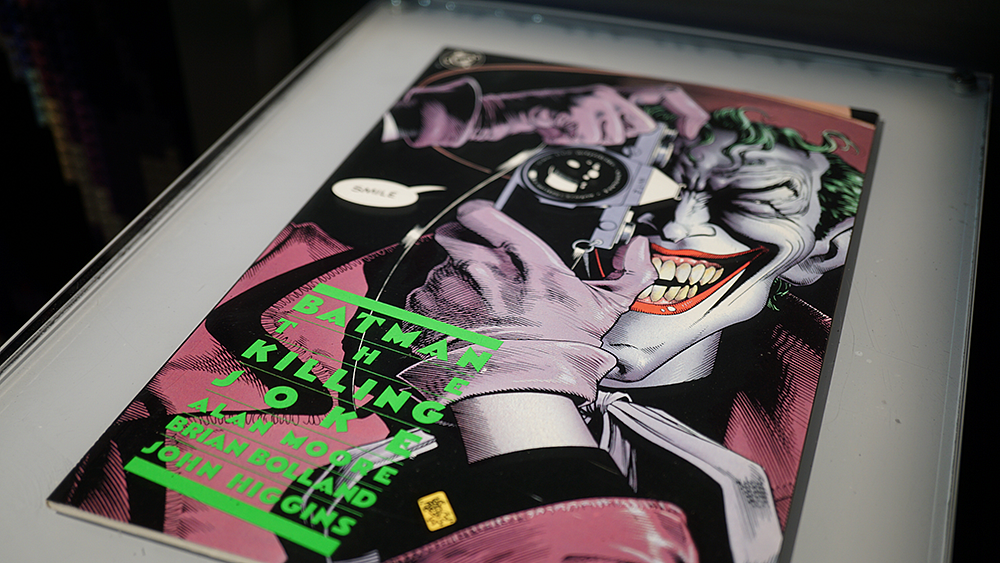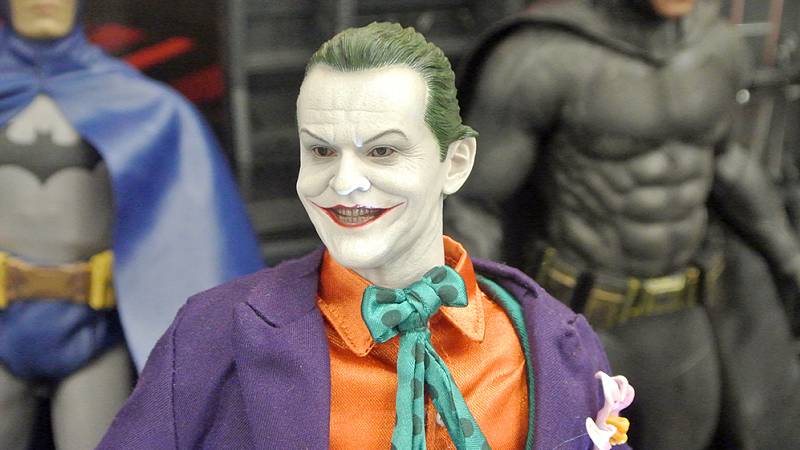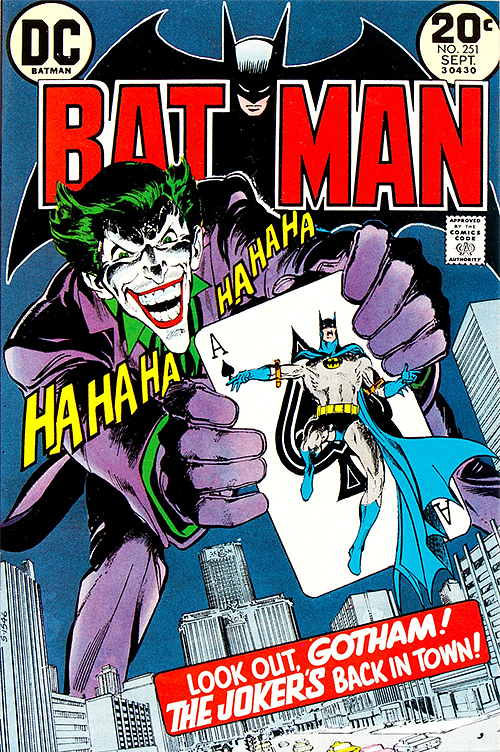
Experiential Learning | Research & Innovation | Community Impact | Career Preparation | Teaching Excellence | 21st Century Liberal Arts | Building Community | Good Vibes | CAS Spotlights | All Stories | Past Issues

Everyone Loves to Hate the Joker
BY JENNY BROOKS
JUNE 9, 2025
What makes the comic book villain the Joker such a popular antagonist for Batman?
It’s one of many questions Professor Elizabeth Wheeler examines in her latest research paper, “The Joker’s Shifting Face: Eighty Years of Mad History in Batman and American Culture.”
Wheeler is a professor of English, disability studies and comics studies; the artistic director of Perfect Circle Theater; and creator of the disability studies minor in the College of Arts and Sciences. Along with many articles and book contributions, she’s published two books, HandiLand: The Crippest Place on Earth and Uncontained: Urban Fiction in Postwar America. She is co-writing a third book—a graphic novel examining anxiety in children up to 18 years old—with Harper Bryant Shin.
“I am increasingly interested in writing and making media for the public rather than scholars alone,” Wheeler says. “We're interviewing young people from different parts of the country, different races and economic backgrounds, and finding out a lot about the many different sources of anxiety. We’re getting answers I could not have predicted and that I haven't heard a lot of adults talking about.”
This thorough exploration is the same in her research on the Joker across eight decades of comic book history. In a recent conversation, she shared about her interest in the “grim jester with a twisted brain.”
What are your areas of interest when it comes to research?
I research in the field of disability studies, and I focus on representations of disability in literature and popular culture. I'm particularly interested in visual verbal culture like comics, children's books and areas like that.

What motivated you to explore that specific focus?
In terms of disability studies, my lived experience. I came to feel very strongly that there were just so many basic misunderstandings of disability out there. The classroom and research and scholarship are such a great way to make a space where we can be open to talking about things that are often hush-hush.
I am interested in popular culture like comics because people feel so strongly about their fandoms. They really identify with and engage with those materials in a very deep way.
Is the representation of The Joker since the 1940s purposely that of a madman? Why has the Joker had such lasting popularity?
Oh, yes. He's quite proud of it. In the captions, he gets described as a maniac and a mad genius.
What got me wanting to write about the Joker was the first Joaquin Phoenix Joker movie because it was so gritty and realistic. However, what I've concluded is that the Joker's appeal is paradoxical. If the character were just based on stereotypes of mental illness, that would be a flat character who would have gone away a long time ago.
My theory about pop culture is that good pop culture is fundamentally paradoxical. Any number of people can look at it and get opposite messages.
So, one person can look at the Joker and say, "That is just the worst slander against people with psychological disabilities.” And it’s true; he has no conscience. He's endlessly violent. He will destroy anybody. And he's completely off his rocker.
But he's also powerful and generative and smart. He's always one step ahead of the cops and Batman. He always gets away in the end. I think that it goes back to the idea that people in different marginalized communities who don't have heroes to represent them will identify with the villain.
And I think it's really easy to identify with the Joker. He's so clever. He's so colorful. He's so larger than life.

What are some important ways the Joker represents culture and identity?
The Joker's queerness is an important way that he's a point of identification. His flamboyant style in the ’40s is pretty clear. His flamboyant style comes from being a gangster. But that's racially coded because he wears zoot suits, which were worn by young Latino men at a time they were being villainized.
That dapper style then evolves starting in the 1970s into the Joker going really campy. That's when he really starts overtly flirting with Batman and expressing his love for Batman. And those two can't keep their hands off each other! That just builds through the ’80s and ’90s, and it's very much in line with what was happening with gay liberation at the time.
The Joker in the ’70s is also the time of the psychiatric survivors’ movement and the movement to close mental hospitals. And that's when there starts to be things like the Insane Liberation Front and Mad Pride.
So, there was gay pride and there was mad pride. And he is both. He starts to see his madness as divine and himself as inspired. And he's a really powerful icon for gay and mad pride.
Why do we see the Joker as the most repeated villain in different Batman movies?
For one thing, he's a great story driver because he's so ingenious because of his skill at plotting—and he's so unpredictable. He's what the philosopher Georg Wilhelm Friedrich Hegel called a world historical individual, where he's an agent of destruction who therefore drives history. But the other thing is he's a looking glass; you can see in him what you want.
When it comes to breakthrough representations for modern times, what is something that comes to mind for you?
One that I really love is El Deafo by Cece Bell. I recommend both the comic and the TV show. It's for kids, and it's about being resilient in the face of acquired disability; moving to a new place; and trying to figure out how to have friends when you are deaf and turning it into a superpower.

Top 5 Jokers
After spending so much time with Batman popular culture, from comic books to movies, Professor Elizabeth Wheeler has some favorite versions of the Joker. Here are her top five representations:
- Heath Ledger’s Joker in The Dark Knight (2008)
- The Joker in Arkham Asylum: A Serious House on Serious Earth by Grant Morrison and Dave McKean, (1989)
- Original 1940s Batman comics Joker by Bill Finger, Bob Kane and Jerry Robinson
- 1970s queer Joker in “The Joker’s Five-Way Revenge!” by Steve Englehart, Marshall Rogers and Terry Austin.
- Mark Hamill’s Joker voiceover in Batman: The Animated Series (1992-1995)
